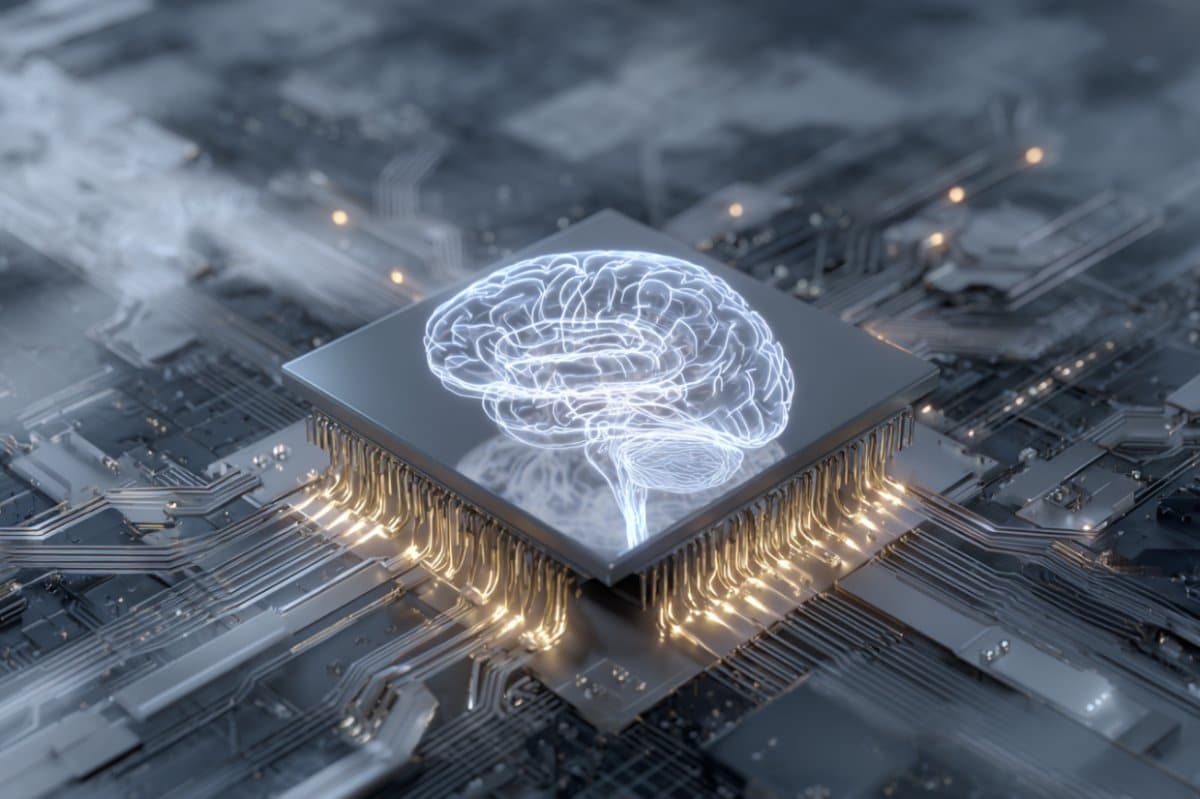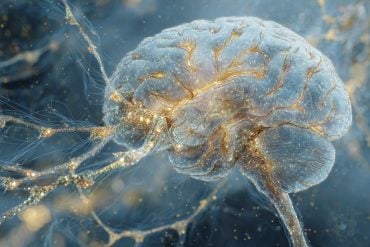Summary: Scientists have developed a brain-inspired semiconductor that can adjust its responses based on experience, much like human neurons do through “intrinsic plasticity.” Called the “Frequency Switching Neuristor,” the device combines two types of memristors to regulate spiking frequency, enabling it to learn and adapt autonomously.
Simulations showed the technology reduced energy consumption by 27.7% compared to traditional neural networks, while also demonstrating resilience by reorganizing after damage. This breakthrough could revolutionize AI hardware, offering smarter, more efficient, and more durable systems for applications like edge computing and autonomous driving.
Key Facts
- Intrinsic Plasticity: The chip mimics neurons’ ability to adapt sensitivity based on repeated experience.
- Energy Efficiency: Achieved the same AI performance with 27.7% less energy use.
- Self-Recovery: Demonstrated resilience by reorganizing after simulated neuron damage.
Source: KAIST
The human brain does more than simply regulate synapses that exchange signals; individual neurons also process information through “intrinsic plasticity,” the adaptive ability to become more sensitive or less sensitive depending on context.
Existing artificial intelligence semiconductors, however, have struggled to mimic this flexibility of the brain.

A KAIST research team has now developed next-generation, ultra-low-power semiconductor technology that implements this ability as well, drawing significant attention.
KAIST (President Kwang Hyung Lee) announced on September 28 that a research team led by Professor Kyung Min Kim of the Department of Materials Science and Engineering developed a “Frequency Switching Neuristor” that mimics “intrinsic plasticity,” a property that allows neurons to remember past activity and autonomously adjust their response characteristics.
“Intrinsic plasticity” refers to the brain’s adaptive ability- for example, becoming less startled when hearing the same sound repeatedly, or responding more quickly to a specific stimulus after repeated training.
The “Frequency Switching Neuristor” is an artificial neuron device that autonomously adjusts the frequency of its signals, much like how the brain becomes less startled by repeated stimuli or, conversely, increasingly sensitive through training.
The research team combined a “volatile Mott memristor,” which reacts momentarily before returning to its original state, with a “non-volatile memristor,” which remembers input signals for long periods of time. This enabled the implementation of a device that can freely control how often a neuron fires (its spiking frequency).
In this device, neuronal spike signals and memristor resistance changes influence each other, automatically adjusting responses. Put simply, it reproduces within a single semiconductor device how the brain becomes less startled by repeated sounds or more sensitive to repeated stimuli.
To verify the effectiveness of this technology, the researchers conducted simulations with a “sparse neural network.” They found that, through the neuron’s built-in memory function, the system achieved the same performance with 27.7% less energy consumption compared to conventional neural networks.
They also demonstrated excellent resilience: even if some neurons were damaged, intrinsic plasticity allowed the network to reorganize itself and restore performance. In other words, artificial intelligence using this technology consumes less electricity while maintaining performance, and it can compensate for partial circuit failures to resume normal operation.
Professor Kyung Min Kim, who led the research, stated, “This study implemented intrinsic plasticity, a core function of the brain, in a single semiconductor device, thereby advancing the energy efficiency and stability of AI hardware to a new level.
“This technology, which enables devices to remember their own state and adapt or recover even from damage, can serve as a key component in systems requiring long-term stability, such as edge computing and autonomous driving.”
This research was carried out with Dr. Woojoon Park (now at Forschungszentrum Jülich, Germany) and Dr. Hanchan Song (now at ETRI) as co-first authors, and the results were published online on August 18 in Advanced Materials (IF 26.8), a leading international journal in materials science.
Funding: This research was supported by the National Research Foundation of Korea and Samsung Electronics.
About this neurotech research news
Author: JEEHYUN LEE
Source: KAIST
Contact: JEEHYUN LEE – KAIST
Image: The image is credited to Neuroscience News
Original Research: Open access.
“Frequency Switching Neuristor for Realizing Intrinsic Plasticity and Enabling Robust Neuromorphic Computing” by Kyung Min Kim et al. Advanced Materials
Abstract
Frequency Switching Neuristor for Realizing Intrinsic Plasticity and Enabling Robust Neuromorphic Computing
The human brain’s efficiency and adaptability in processing information is largely attributed to spatiotemporal spiking activities and intrinsic plasticity—the ability of neurons to autonomously modulate their excitability.
Mott memristors, with their threshold switching characteristics, have been effectively utilized as artificial neurons, or neuristors, to generate spiking activities. However, the implementation of intrinsic plasticity and its significance in neuromorphic computing has yet to be systematically explored.
Here, a frequency switching (FS) neuristor is presented that emulates neuron’s intrinsic plasticity characteristics.
By combining a volatile Mott memristor with a non-volatile valence change memory (VCM) memristor, the FS neuristor achieves programmable multi-level frequency–voltage (f–V) characteristics analogous to the transfer functions of neuronal intrinsic plasticity.
Through device-based simulations of sparse neural networks, it is proposed that this intrinsic plasticity acts as memory and processor itself, enhancing network performance and reducing energy consumption.
Additionally, intrinsic plasticity endows the network with structural plasticity, enabling full recovery of the network’s performance after random neuron damage, suggesting a pathway toward more adaptive and resilient neuromorphic computing systems.






